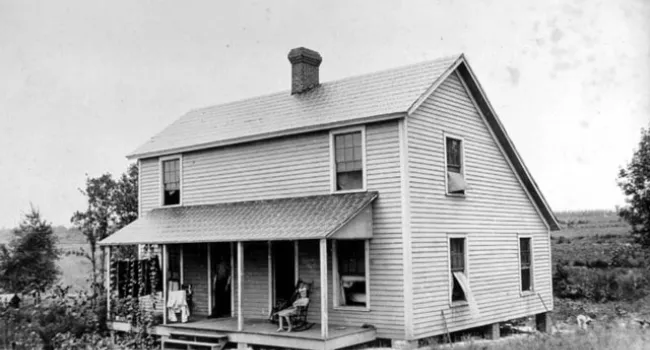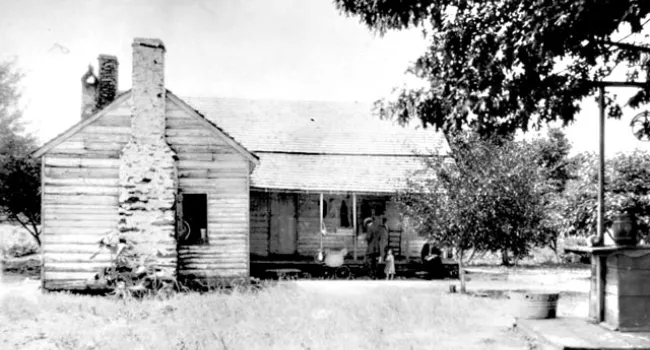
Photo
The town of Pacolet, in Spartanburg County, attracted large numbers of workers to its mills. Here, a number of mill operatives cross the iron bridge over the Pacolet River in 1913. Courtesy of the...
Spartanburg County was founded in 1785 and lies near the Blue Ridge Mountains. Both the county and its seat are named in honor of the Spartan Regiment, a local militia who served the Americans in the Revolutionary War. Notable residents include general William Westmoreland and hymn writer William Walker.
The county was principally settled by Scotch-Irish and other Europeans who moved to the area from Pennsylvania and Virginia in the late 18th century. Historically, the economy relied on small cotton farms, cattle raising, and the Lowcountry tourists that visited the area’s mineral springs. After the Civil War, the region’s economy transitioned to textile manufacturing. Today, Spartanburg County has become an industrial hub. In fact, “the New York Times reports Spartanburg as having the highest per capita international investment in the nation.”
SOURCE: Economic Futures Group. Accessed June 10, 2016.

Photo
The town of Pacolet, in Spartanburg County, attracted large numbers of workers to its mills. Here, a number of mill operatives cross the iron bridge over the Pacolet River in 1913. Courtesy of the...
Video
A short profile of many popular musicians who got their start in Spartanburg, S.C., including Joe Bennett and the Sparkletones, Paul Riddle, the Marshall Tucker Band, Pink Anderson (from whom Pink...
Video
Virginia Harley is one of the Upstate's most well known artists. She lives in Chesnee, SC and is a member of "The Foothills Artisan Center." One of her creations has even been on display at the White...
Photo
Glenn Springs Hotel, in Spartanburg County. Built 1838, it burned in 1941. This photograph was probably taken about 1900. A train brought vacationers and South Carolinians escaping the heat of the...
Photo
Eddie Norton, a sweeper in the Saxon Mill, Spartanburg, was photographed by the child labor reformer Lewis Hine on May 17, 1912, for the U.S. Child Labor Commission. Courtesy of the National Archives...
Audio
"L" is for Littlejohn, Cameron Bruce [1913-2007] Attorney. Legislator, Jurist.
Audio
"E" is for Evans, Emily Plume [Died 1942] Suffragist. Club-woman.
Photo
The interior of a mill village home in Spartanburg around 1920 is a marked contrast to the contents and design of the Victorian interiors of the wealthy (see Interior Décor Of The Victorian Era, Front...
Photo
Mill housing in South Carolina exhibited a variety of styles, but the most widely used was a copy of the salt-box construction of New England mill villages, where the steeply pitched roof helped keep...
Photo
This vernacular house in Spartanburg County, built with a gable front, is a good example of the type of tenant farm house that could have been built anywhere in the state of South Carolina between...